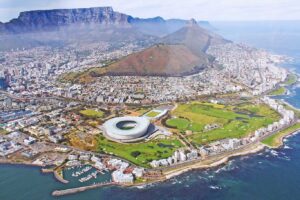
It is the gateway to the soul of Cuba, the emblem of its colors and contradictions: Havana – or simply Habana as the Cubans call it – is one of the most interesting cities that can be visited in the world. Although many tourists limit themselves to a quick visit, Havana is a special city to which it is worth dedicating at least a couple of days to appreciate its beauty and atmosphere.
Are you ready to savor the energy of Cuba on the streets of the capital? Here is a list of what to see in Havana in 7 unmissable places.
The Squares Of Old Havana
The historic center of Havana is the real beating heart of the city, the perfect place to start your trip to Cuba. Habana Vieja was declared a UNESCO World Heritage Site in 1982 and is the perfect representation of the two faces of the island: beautifully renovated and shopping streets alternate with abandoned buildings and crumbling facades. She can be elegant and scruffy at the same time, however contradictory it may seem in terms.

Habana Vieja can be explored on foot, strolling through the four squares around which the historic center has developed: from the unmissable used book market in Plaza de Armas to Plaza de la Catedral, sumptuous and baroque, from Plaza de San Francisco de Asis elegantly restored to the colorful Plaza Vieja. Look at the city from the “dark room” On the corner of Plaza Vieja, at the top of the Gomez Vila building, there is a very special attraction: the Camera Obscura. It is a gift made to Cuba by Spain who owns a copy equal to Cadiz, in the world there are less than a hundred in total.
Camera Obscura
The Camera Obscura is based on an invention by Leonardo Da Vinci and is able, through a game of mirrors, to show the city at 360 ° in real time, including people: from the tourist walking downtown to the old Cuban woman who stretches out the cloths on a balcony of the Vedado. It’s like a panoramic view of the whole of Havana, but much more fun.
Museum of the Revolution
In the Centro Avana district there is instead the Museum of the Revolution, useful for deepening the history of Cuba. In the sumptuous building that was the Presidential Palace until 1959, exhibits ranging from pre-Columbian culture to recent history are exhibited, although as you can guess from the name the main attention is given to the latter.

It is impossible not to notice the Museum of the Revolution while walking through Centro Havana: inside you can see photographs and historical documents, but in the garden the means of transport used during the salient moments of the Cuban Revolution stand out. Including a tank used by Castro at the Bay of Pigs and the yacht with which he, Che Guevara and other 80 Cuban exiles returned to the island in 1956.
The Capitolio Nacional
Not far from the Museo de la Revoluciòn is the symbol of Havana with its dome over 60 meters high: the Capitolio Nacional. Built in the 1920s on the model of the Capitol in Washington, it was the seat of the Cuban Congress until the Revolution and now houses the Academy of Sciences and the National Library of Science and Technology. It is an imposing structure and can be considered the true center of Havana, since the distance between the city and any other location in Cuba is measured from this exact point.

Take a ride in a vintage car
It is not a place but it is certainly one of the attractions that make Havana so special. The colorful American vintage cars crowd the streets of Havana like no other place in the world: it is a blast from the past, a living postcard in vintage style and a paradise for all fans of the genre. The blockade of imports implemented with the Revolution has transformed Cubans into exceptional mechanics: for decades they have been fixing, polishing and caring for the cars at their disposal with obsessive care, mainly from the 1940s and 1950s.

Most American cars today are used as taxis for tourists: with 40 CUC they will take you on a complete tour of Havana for about one hour. Impossible not to feel a bit 1950s superstar.
Watch The Sunset From The Malecón
Among the places to see in Havana, one cannot fail to mention the Malecón. The beautiful promenade runs along the seafront for 8 kilometers between Habana Vieja and Vedado and is loved by Cubans, who flock to it at any time of day. A meeting place for sportsmen, artists and lovers, according to many it also offers the perfect view for one of the most beautiful sunsets in Cuba.

A Mojito With Frank Sinatra And Marlon Brando at the Hotel Nacional
Strolling through the Malecón it is impossible not to notice the elegant building of the Hotel Nacional.

Inaugurated in the Thirties, more than a simple hotel it is a real national monument – a status recognized even by UNESCO – and its history has been intertwined since its opening with that of the whole of Cuba. All the most famous people visiting in Havana they stayed here, from politicians to international artists such as Marlon Brando and Frank Sinatra, it was the headquarters of Batista’s troops and even the site of a large mafia conference organized by Lucky Luciano.
Even if you haven’t booked a room, don’t miss a mojito in the garden or even the rich buffet breakfast, also open to external customers.
Follow Hemingway’s Steps
Among the most loved places by Hemingway in Havana, in addition to the Hotel Nacional, there are the two places where he loved to spend time sipping a cocktail: the mojito alla Bodeguita del Medio and the daiquiri at El Floridita. The first is located in the center of Habana Vieja and is by far one of the most famous places in Havana, it is even said that the cocktail then exported all over the world was born right here. El Floridita instead is located not far from the Capitolio and houses a life-size bronze statue depicting the writer.







